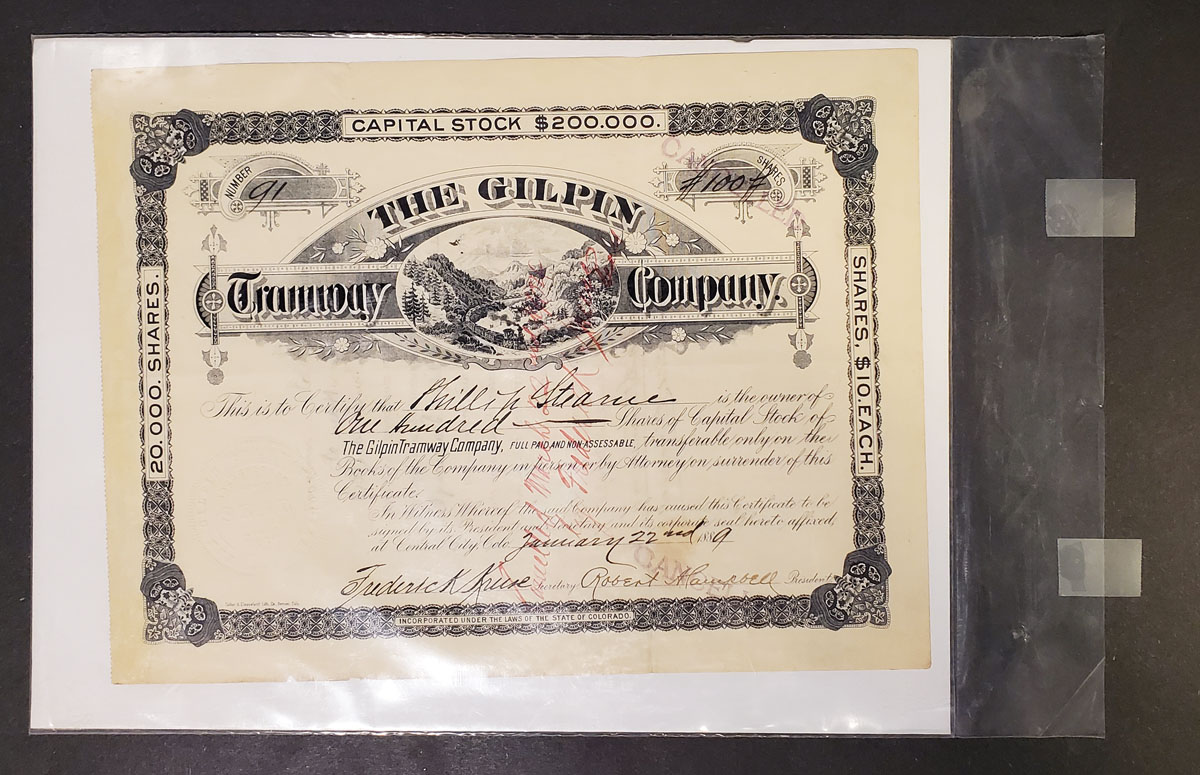Handling
Basically...

Most hobbies display a typical pecking order: unused items are normally valued more highly than those that were used. Scripophily is different.
Scripophily is a hobby dedicated to collecting old securities. An unused certificate was NEVER a security. Yes, a piece of paper could have been intended for use as a security. However, unless that document were properly signed and issued, it was just a piece of printed paper. Unissued stocks and bonds are still collectible, but collectors value much less than issued certificates. Such documents are commonly called "remainder," and display the lowest prices in the hobby.
Consequently...
Documents that became true securities were touched by human hands, often many times. That means that fully issued certificates should show evidence of handling. There should be signatures of officers . Most will have embossed corporate seals. If stock certificates were traded, they will likely display signatures of registrars, possibly trust companies, and maybe signatures of stockholders who sold their investments days or years after purchase. Cancellation marks of all sorts are normal. Staple holes and folds are common. In other words, evidence of human handling and paper damage is a reality of the hobby. Issued certificates should show signs of use.
So one really needs to question,
Do we need to handle certificates with white cotton gloves?
I'm not going to take a position on that question. Every collector should know implicitly that we are merely custodians holding certificates for awhile before handing them over to new collectors. I will advise that we try to prevent further damage to our collectibles. It's really not that hard to:
- Wash hands before handling.
- Move food and drink off the table while working.
- Clear the work area.
Opening packages
Most collectors will buy certificates remotely and receive them through the mail. Items purchased from major auction houses and professional dealers will be packaged appropriately. Nonetheless, open packages with care.
Opening packages received from eBay sellers requires more care because packaging is so unpredictable. As a rule, eBay sellers over-package. I've received items that looked like they could have survived delivery to the front lines of a tortured, rain-soaked battlefield. Some packages have taken over five minutes to open. That's crazy!

Was tape REALLY necessary to seal this package?
Padded bubble envelopes
Well-meaning eBay sellers often send certificates inside padded bubble envelopes. That seems Innocent enough until a collector removes a certificate from its envelope to find it embossed with impressions from polyethylene bubbles. Bubble envelopes are liabilities in the scripophily hobby and should be rigorously avoided. If you're buying from eBay, ALWAYS send messages telling sellers NOT to send certificates in bubble envelopes.
Taped poly bags
Another trick used by eBay sellers is packaging certificates in poly bags and sealing those bags with tape. Yes, there is a certain protective logic. Poly bags are good in case it is raining when packages get delivered. But why tape them? Are certificates going to miraculously escape poly bags during transit?
I warn against tape because It is really easy to get tape stuck to certificates during extraction. Consequently, I advise collectors to NOT try to save poly bags. Simply cut certificates out of bags and discard. Is it worth rescuing a poly bag rescue only to damage a valuable certificate?